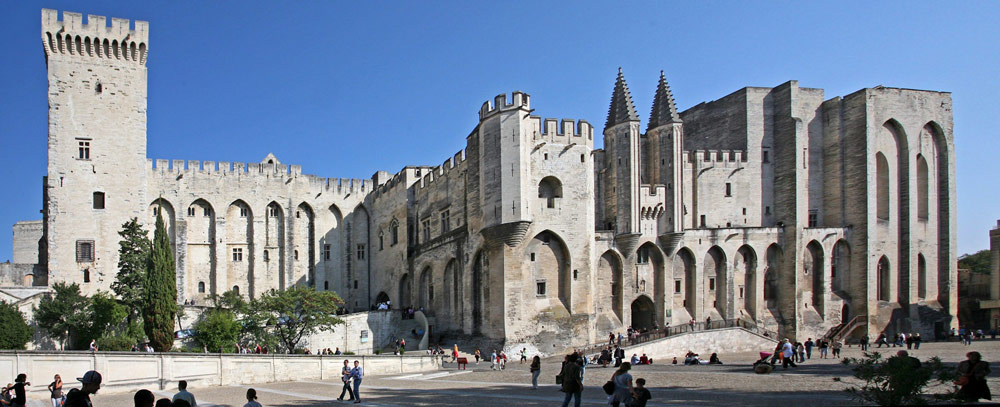
By Joelle Rollo-Koster
In the medieval church, women’s roles were limited – usually some form of enclosure and celibacy, such as becoming an anchoress walled up alone for life, or a nun in a classic convent. On the other extreme were a few dramatic examples of women who made history for the church while flying in the face of gender norms: heroes such as Joan of Arc.
The full truth, though, is more complicated. Medieval women were there all along, even in priests’ own houses. In her book “The Manly Priest,” historian Jennifer Thibodeaux reminds us that while celibacy was always the church’s ideal, it was not truly enforced until later in the Middle Ages. At least until the 11th century, some priests had wives and children who were not considered illegitimate. Even after the 14th-century Black Death, clerical households with wives and children thrived in Italy.
As the church’s notions of illicit sex and illegitimacy hardened, however, its attitudes toward women did, too. Medieval scholars – all men – defined women’s temperament in negative terms: Women were libidinous, frivolous, unfaithful, capricious, unpredictable and easily tempted. They required constant surveillance and were kept away from clerics, at least in theory. They certainly could not hold overt positions in the pope’s court unless they were his mother or sister.
Still, another reality emerges. The church may not have seen women as equals, but nevertheless, their work was key to the workings and finances of the papal court and its surroundings. The fact is made obvious in the archives by simply following the money. It was hardly glamorous work but necessary for the functioning of the papal court.
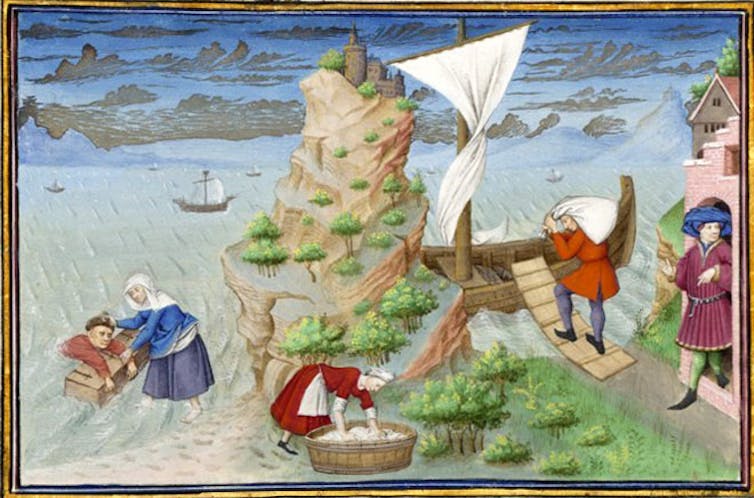
Bibliothèque de l’Arsenal via Wikimedia Commons
Vatican payroll
The Vatican Archives’ account registers make it possible to trace who was paid and for what at the medieval papal court in Avignon, where the papacy was based for most of the 14th century. Amid the tedious task of deciphering various medieval shorthand systems, which organize expenses into categories such as “extraordinary wages,” “liturgical ornaments,” “war expenses” or “wax account,” I encountered surprises: Women appear in the lists of salaried employees at the medieval papal court.
Furthermore, they were involved in tasks that “touched” the leader of the church. Even a pope’s clothes need making, mending and washing. Women crafted an ornate style highly appreciated by the pontiffs – glorifying them with pure white linen and gold embroidery. The Vatican Apostolic Archives’ Introitus and Exitus, medieval financial records, provide substantial evidence that women made sacerdotal ornaments and garments.
Between 1364-1374, the registers recorded the pope’s launderesses – women otherwise lost to history. Among them were Katherine, the wife of one Guillaume Bertrand; Bertrande of St. Spirit, who washed all the papal linens upon his election; and Alasacie de la Meynia, the wife of Peter Mathei, who did the pope’s laundry for the Christmas festivities of 1373 and is mentioned again in 1375.
These women were all wives of officers at the papal court. Records identified them by their full name, which was not the case for everyone on the pope’s payroll. This is important: The records gave them real presence, unlike most female laborers.
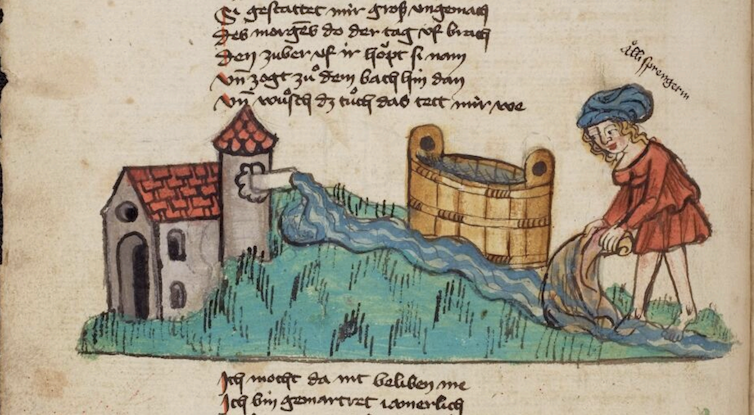
Heidelberg University Library
Later records were less clear. Between the 1380s and 1410s, liturgical garments were made and washed by various women, including the unnamed wife of Peter Bertrand, a doctor of law; Agnes, wife of Master Francis Ribalta, a physician of the pope; another Alasacie, wife of carpenter John Beulayga; and the unnamed wife of the pope’s head cook, Guido de Vallenbrugenti – alias Brucho.
Only one woman, Marie Quigi Fernandi Sanci de Turre, appears without a male relative. As time progressed, women’s names were not systematically recorded.
Most of these later women, too, were married to curial officers who maintained rank at court by working in trade, medicine or the military. Women were never paid directly; their husbands collected their salaries. Still, this was not “unseen” labor but a salaried occupation, explicitly recorded.

Bibliothèque Nationale via Wikimedia Commons
Working day – and night
Many other women immigrated to work in Avignon. According to a partial survey of the city’s heads of households in 1371, about 15% were women. Most had traveled far and wide – from elsewhere in present-day France, as well as Germany and Italy – to reach the papal court and a chance at employment.
Of the total female heads of household, 20% declared an occupation. The range of these women’s trades is staggering. There were fruit-sellers, tailoresses, tavern-keepers, butchers, candlemakers, carpenters and stonecutters. Women in Avignon worked as fish-sellers, goldsmiths, glove-makers, pastry-bakers, spice merchants and chicken-sellers. They were sword-makers, furriers, booksellers, bread-resellers and bath-keepers.
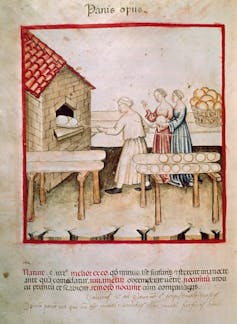
De Agostini Picture Library/Getty Images
Bathhouses, the “stews,” were often brothels. Prostitution was considered a legal occupation in Avignon and controlled by the church. Marguerite de Porcelude, known as “the Huntress,” paid an annual tax to the diocese for her lodging. Several prostitutes rented tenements from the convent of St. Catherine, and Marguerite Busaffi, daughter of a prominent banker, owned a brothel in the city.
In 1337, the marshal of the Roman court – the highest secular judicial officer – taxed prostitutes and procurers two sols per week. Pope Innocent VI, scandalized by the practice, annulled it in 1358.
Still, because of the general taint associated with the sex trade, the church attempted to reform prostitutes and convert them into nuns. The Avignon popes locked them up in a special convent, the Repenties, set up far from the center of town.
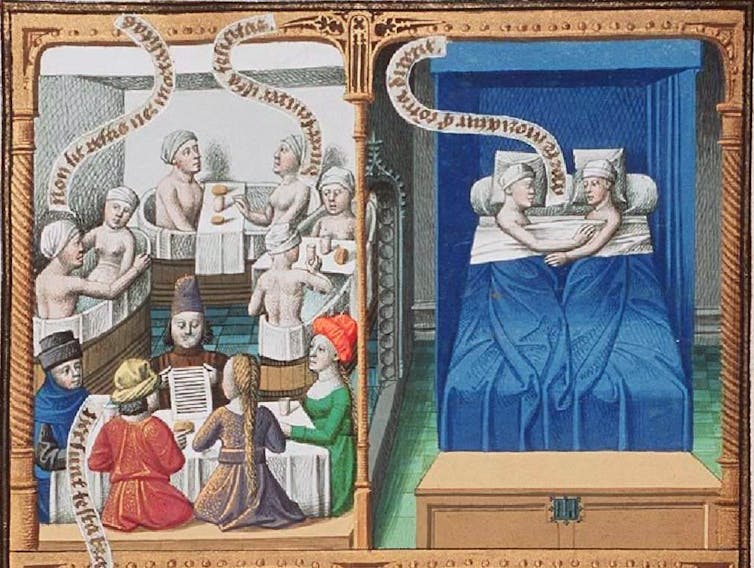
National Library of the Netherlands via Wikimedia Commons
Eventually, the establishment became a form of prison for “unruly” women – those who were pregnant out of wedlock. But for some hundred years, groups of ladies of the night took vows and lived as nuns there, controlling the affairs of their own convent with an iron fist.
In the 1370s, Pope Gregory XI offered the nuns and their donors a plenary indulgence, a forgiveness of sins. They followed a rule emphasizing that regardless of their pasts, abstinence and continence could make them spiritually “chaste.”
The ladies of the convent left detailed records of the properties they acquired. In 1384, its leaders petitioned the papal treasury, demanding arrears they were owed from a priest’s donation – and received what was due. Few medieval women had the chutzpah to petition a court for past dues, much less the pope’s. The Repenties did.
Joelle Rollo-Koster, Professor of Medieval History, University of Rhode Island
This article is republished from The Conversation under a Creative Commons license. Read the original article.
![]()
Joelle Rollo-Koster is Professor of Medieval History at the University of Rhode Island.




























Leave a Reply